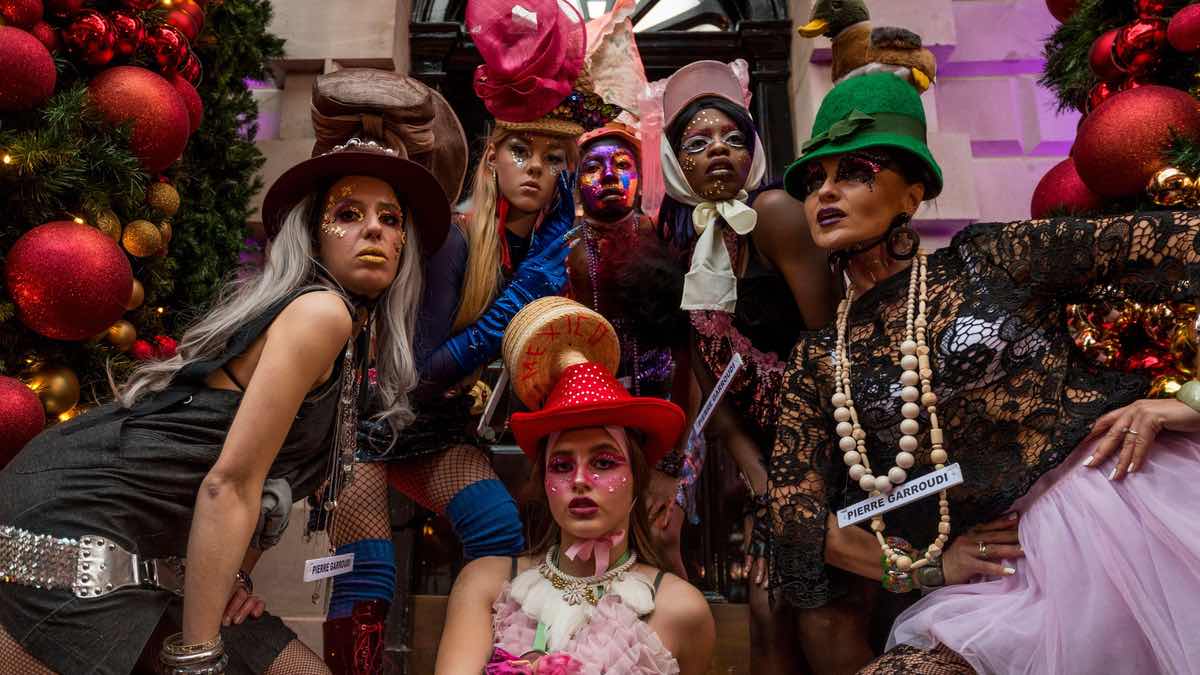

What to wear!? A law firm wants its employees to be ‘wildly fabulous’ and dress to impress at work, while HSBC has followed Virgin Atlantic and BA with new casual uniforms for its 4,000 branch staff. Meanwhile, research has been carried out into the most awkward questions faced by HR …
With so many of us working from home, the question of what is suitable attire for the workplace has been reduced to what you can get away with on Zoom meetings. And even then, if you have doubts, you can turn the camera off.
It’s probably fair to say that the effect of the homeworking switch is that less consideration is given to what we wear day to day, even when in the office, but law firm Vardags has turned this rather grey thinking on its head by injecting couture into its culture.
Inspired by celebrity-riven Mayfair nightclub Annabel’s, Ayesha Vardag, the firm’s founder and president, has, says The Guardian, invited her staff to “bring their personality to work”, and to “be as wildly fabulous as you feel like and express yourself to the full”.
Her memo to employees added: “If you fancy an electric-blue sequined jacket and gold leather trousers, if you want pink hair or scarlet DMs, if you want a purple velvet jacket, that’s all good.”
For court work, staff were told suits would still be needed, however, and attire had to be “still absolutely top-end and appropriate to the luxury market with which we engage, not undermining your gravitas as a professional”. So that’s pyjamas ruled out.
The Guardian quotes Peter York, the writer and style commentator, who questioned whether the new dress code could be successfully adopted by Vardag’s 120 employees. He says: “They should dress like they’re going to Annabel’s? How many of those people have actually been to Annabel’s?”
HSBC’s new outfits feature t-shirts, jeans, jump-suits and Converse pumps, rather like a sales rep at an HR technology event.
HSBC UK’s director of distribution, Jackie Uhi, said the days of “bowler-hatted bankers” were over. Clearly, she’s right, but didn’t hats fall out of favour in finance 40-50 years ago? In fact, you’re more likely to spot the clientele at Annabel’s wearing a bowler hat; ironically of course.
Awkward questions
With Vardag’s new dress code employees won’t feel the need to double-check what they plan to wear at work with their boss. There will be no need to ask, for example: “Would it be OK if I wear my Dior shift dress with knee-high boots and beaded flapper hat tomorrow?”
HR solutions company Remote tells us that, via Google searches, it has determined which are the 10 most awkward conversations one can have at work. Wearing couture fashion items isn’t among them, disappointingly.
They tend to focus on more prosaic concerns: “How to ask for a pay rise” is top, followed by “How to tell your boss you’re sick” and that trying task, “How to give negative feedback”. In fourth place was the somewhat mystifying “What do I say on my first day in a new job?”. “Well, that should depend on what you’ve been asked” would be one response.
“What do you say to an employee who’s leaving?” was also Googled. One worries about what’s happening to levels of articulacy if a search engine is needed to provide the answers. Luckily we’ll soon have artificial intelligence to handle these difficult conversations on our behalf (joke). Phew, no more “Awks”.
Nadia Vatalidis, VP of people at Remote, shares sensible advice for dealing with difficult conversations at work: “Establishing regular one-to-one meetings with direct reports is a critical step to enabling this culture of direct communication. Ensure all team members have a designated safe space to have these difficult conversations.”
Whether such conversations would be made harder or easier if their participants were wearing “wildly fabulous” high fashion fit for Annabel’s – makes for delicious speculation.

